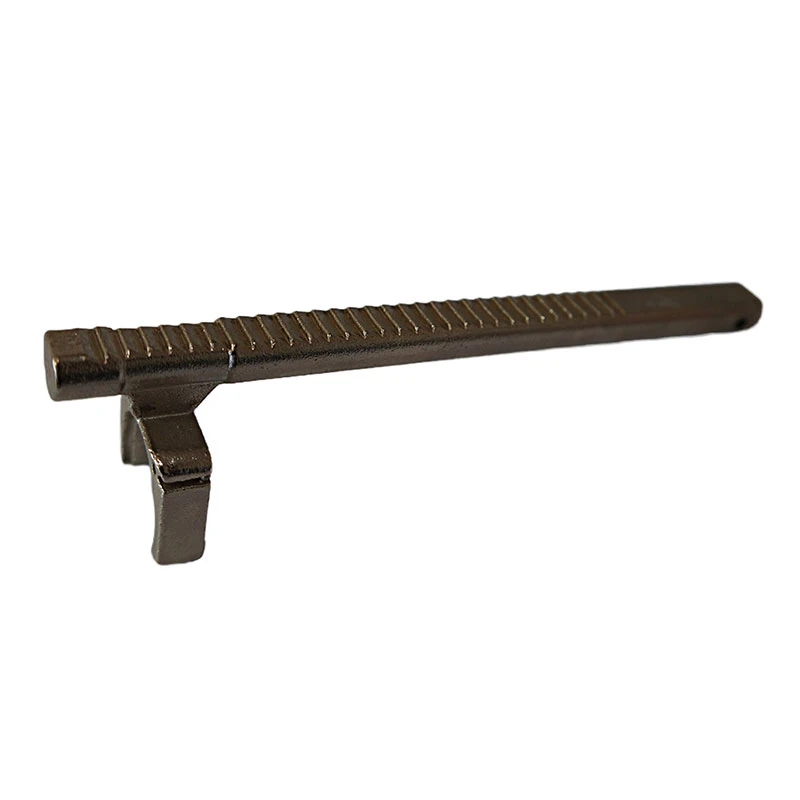die casting ejector pins
Understanding Die Casting Ejector Pins Importance and Applications
Die casting is a prevalent manufacturing process that allows for the production of complex metal parts with high precision. One of the essential components of the die casting process is the ejector pin. These pins play a crucial role in the successful extraction of cast parts from the die, and understanding their function and application is vital for manufacturers aiming to achieve efficiency and high-quality outputs.
What are Ejector Pins?
Ejector pins are slender rods made typically from hardened steel or alloy materials. They are installed in the die casting mold and are integral to the process of removing the finished part from the mold cavity after cooling. Depending on the design of the mold and the complexity of the cast part, the number, length, and positioning of the ejector pins can vary significantly.
Function of Ejector Pins in the Die Casting Process
Once the molten metal is poured into the die and allowed to cool, it solidifies to form the desired shape. However, due to the snug fit within the mold cavity and the cooling process, the finished part can become tightly adhered to the interior surfaces of the die. At this stage, ejector pins come into play.
The mechanism works when the die is opened; hydraulic or mechanical systems push the ejector pins forward, exerting pressure against the back of the cast part. This force effectively dislodges the part from the mold cavity, allowing for easy and efficient removal. Proper alignment and adequate force are crucial because any misalignment could lead to damage to both the part and the mold.
Design Considerations for Ejector Pins
The design of ejector pins is not a one-size-fits-all approach. Several factors must be considered, including
die casting ejector pins

1. Material Choice Ejector pins are often made of hardened steel to withstand the stresses of repeated use and resist wear, especially when dealing with high production volumes. Some applications may require special coatings or treatments to enhance durability and reduce friction.
2. Dimensions The diameter and length of the ejector pins must be calculated based on the specific design of the cast part and the configuration of the mold. Pins that are too short may not generate adequate force, while overly long pins can lead to deformation during operation.
3. Placement Strategic placement of ejector pins is essential to ensure uniform pressure when ejecting the part. Poor placement can result in deformation or damage to thin-walled sections of the cast part.
4. Cooling and Heating Considerations In some cases, the ejector pins might be designed to also serve a cooling function, helping to regulate temperatures within the mold. This can enhance cycle times and improve the overall quality of the finished part.
Challenges and Solutions
While ejector pins are crucial for successful die casting, several challenges may arise. For instance, wear and tear can lead to degradation of the pins over time, necessitating regular maintenance or replacement. Additionally, if the ejector pins are not adequately calibrated or maintained, they can cause defects in the part, such as surface scratches or deformation.
Manufacturers often employ preventative measures, such as routine inspections and utilizing advanced materials for ejector pins, to mitigate these challenges. Implementing automation in the die casting process can also enhance precision and reduce the risk of human error related to ejector pin operation.
Conclusion
Ejector pins are a small yet indispensable component of the die casting process. Their ability to efficiently and effectively remove cast parts from molds significantly impacts production rates and the quality of the final products. By understanding their functionality, design considerations, and potential challenges, manufacturers can optimize their die casting operations, leading to improved efficiency, reduced defects, and enhanced overall performance in the production of metal components. As technology advances and manufacturing processes evolve, the role of ejector pins will continue to be a focal point in achieving excellence in die casting.
-
OEM Sand Cast Pump Valve Fittings - Baoding Hairun | Precision Engineering, CustomizableNewsJul.30,2025
-
OEM Sand Cast Pump Valve Fittings - Baoding Hairun Machinery And Equipment Trading Co., Ltd.NewsJul.30,2025
-
OEM Sand Cast Pump Valve Fittings - Baoding Hairun Machinery And Equipment Trading Co., Ltd.NewsJul.30,2025
-
OEM Sand Cast Pump Valve Fittings - Baoding Hairun Machinery|Precision Engineering&Fluid ControlNewsJul.30,2025
-
OEM Sand Cast Pump Valve Fittings - Baoding Hairun Machinery And Equipment Trading Co., Ltd.NewsJul.30,2025
-
OEM Sand Cast Pump Valve Fittings-Baoding Hairun Machinery And Equipment Trading Co., Ltd.NewsJul.30,2025















